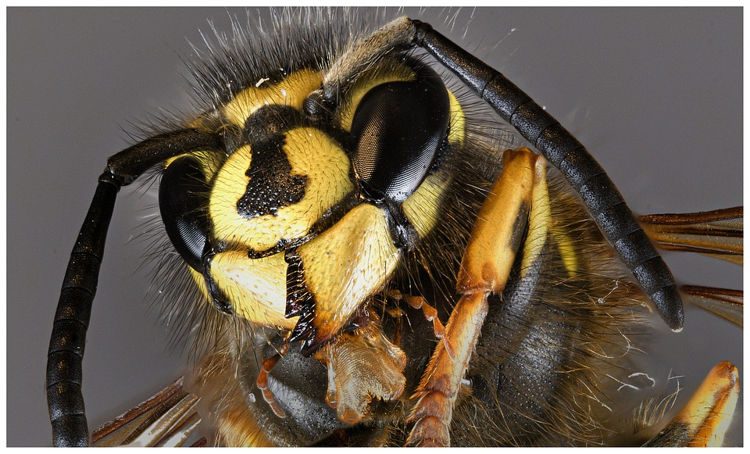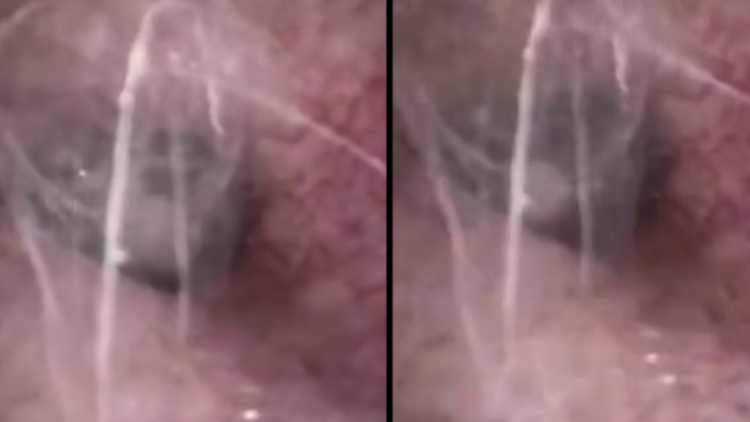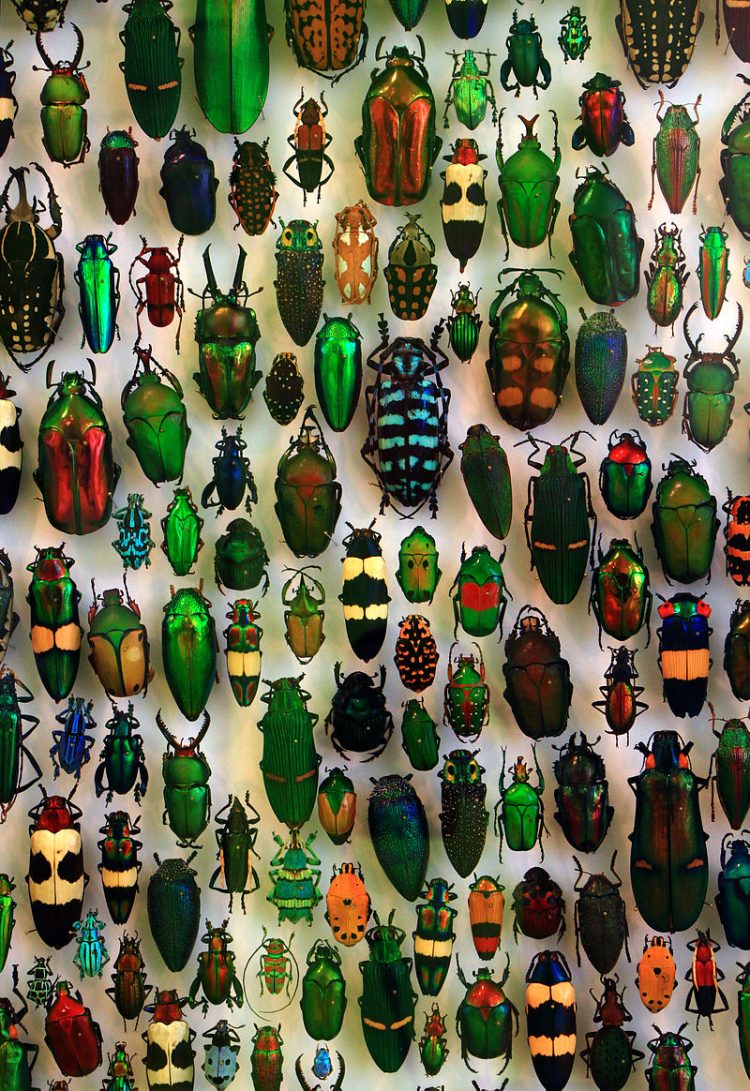Scientists Discover Frightening Species of Wasp That Turns Spiders into Zombies

The Amazon rainforest is home to many frightening creatures, like giant Anacondas, flesh-eating piranhas, just to name a couple, and now you can add a new one to the list, a species of wasp that lays its eggs on the abdomen of spiders and then hijacks their brain, essentially turning them into zombies. The previously […]
Doctors Shocked to Find Spider Spinning Webs Inside Man’s Ear

A Chinese man who checked himself in the hospital because the pounding sound in his left ear wouldn’t go away, was shocked to discover that the noise was being caused by a spider spinning webs deep inside his ear canal. Doctor Cui Shulin, deputy chief physician at the department of otolaryngology at the Dalian Central Hospital, in […]
Millions of Ladybugs Are Converging on a Remote Radio Tower in Australia and Nobody Knows Why

A remote radio tower near Mount Burr in South Australia has attracted millions of ladybugs for reasons no one seems to understand. The unusual sight was recently reported by wildlife photographer Steve Chapple, who posted several photos and a video of it on his Facebook page. Contacted by ABC News Australia, Mr. Chapple said that […]
Indian Girl Has Ants Pulled From Her Eyes Every Day And No One Knows How They Get There

An 11-year-old girl from Belthangady, India, recently made news headlines for having around 60 dead ants pulled from her eyes. As for how the insects got there, some doctors suggest they entered her body through the ears. Last week, the girl, known only as Ashwini, started complaining of severe pain in her eyes. She told her […]
This Buddha Sculpture Is Made from 20,000 Dead Beetles

Japanese artist Yoneji Inamura spent six years of his life collecting 20,000 beetles of different varieties and using them to create a five-foot sculpture of a popular Buddhist deity. It’s unclear how and when exactly Inamura started catching and collecting beetles. Some sources claim that it was during his days working for the local railroad, in […]
Brazilian Scientists Bake Bread Out of Cockroach Flour

With food shortage expected to become a major problem in the next decades, many experts believe that insects could become a major source of nutrients for people in the future. We already have plenty of insect based recipes and restaurants have begun putting bugs on their menus, but we need an effective way of using […]
Man Sprays Insecticide in Ear to Kill Trapped Cockroach

After several attempts to remove a cockroach that had crawled into his ear while he was sleeping, a Chinese man decided to kill the intruder by spraying bug spray into his ear canal. The 60-year-old man from Chengdu told doctors that a cockroach crawled into his ear on February 1st. He could feel it wiggling around […]
French Noodle Maker Is Struggling to Keep Up with Demand for Insect Pasta
When artisanal pasta maker Stephanie Richard added insects to her pasta on a whim, she had know idea what a huge hit it would become. The demand for her ‘protein-rich’, crunchy noodles is now so huge that she’s struggling to keep up with orders! Richards, who strongly believes that insects are “the protein of the future”, […]
This Wasp’s Sting Is So Excruciating You can’t Help but Fall Down and Start Screaming
The Tarantula Hawk is a type of wasp with an excruciatingly painful sting that lasts only three minutes, but feels like a lifetime. The pain, rated four (highest) on the Schmidt sting pain index, is best described as “fiercely electric”. Bug experts and people who have been stung claim the pain is a lot like […]
Mexican Artist Recreates Classic Paintings on Real Butterflies
After experimenting with candy and toothpaste paintings, Mexican artist Cristiam Ramos is now working with preserved butterflies. He spends several hours pouring over each wing, painstakingly decorating them with detailed replicas of classical paintings. Butterfly wings don’t naturally make for good canvases – they’re small, and the texture isn’t altogether right for painting. They’re each […]
Anty Gin – World’s First Gin Made Using Ants
True to its name, ‘Anty Gin’ is literally made from red wood ants. British distiller Will Lowe collects thousands of ants from the forests of Kent and prepares the gin at his lab-style distillery in Cambridge. The bizarre concoction is the world’s first gin to be made from insects, so naturally, it doesn’t come cheap. […]
30 Days of Bugs – Student Goes on Insect Diet for a Whole Month

We’ve heard people going on all sorts of crazy diets, but this one is a first – an American student recently went a 30-day bug fest! Throughout the month of February, Alabama student Camren Brantley-Rios ate insect-laced meals three times a day. The 21-year-old, who documented his bug-eating experience on a blog called ‘30 Days of […]
Guy Claims He Has Tamed a Japanese Giant Wasp, Keeps It on a Leash

The Japanese giant hornet is known as one of the world’s largest and most aggressive insects. It is two inches long with a quarter-inch stinger, can fly at speeds up to 25 mph, and is feared for its powerful, poisonous stings that claim at least 40 lives in Japan every summer. So when a Japanese […]
80-Year-Old Woman Dedicates Her Life to Swatting Flies, Kills Up to 1,000 Per Day

When 80-year-old Ruan Tang had retired, around 14 years ago, she wanted to spend her time doing something useful for her community. And when she realized how much the flies were bothering people during the summer, she decided to do something about it. Tang is now a woman on a mission – to swat as […]
This Collection of Bat-Eating Spiders Is Probably the Scariest Thing You’ll See Today

It’s hard to imagine a fragile spider killing and eating a full-grown bat. I mean there’s no way a tiny spider could have any sort of muscle power over a fully grown bat, right? Believe or not, there are eight-legged bugs out there that can pounce on bats and eventually devour them. And when they […]
